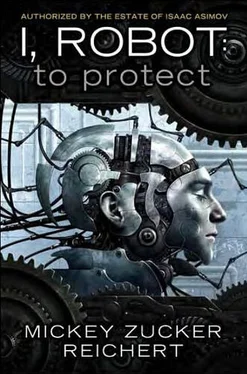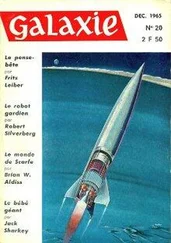As the subject got farther from Amanda Calvin, John drifted back to the table. “You mean, letting the patient know that you know she’s faking?”
“Faking?” Susan frowned. “There’s a huge difference between a malingerer and a hysteric. In fact, you have to specifically rule out faking before you can make the diagnosis of a hysterical conversion reaction.”
“Really?” John sat, truly interested.
“Really. You also have to rule out an actual medical condition.”
John put it all together, his brow crinkled in uncertainty. “So, there’s no physical cause, but your patient actually can’t talk. It’s not something she’s doing on purpose.”
“Correct. And that’s how it’s explained to a person with a conversion reaction. With support, that’s usually enough for a gradual full recovery.”
John made a noise of interested understanding. “But it’s not working in this case?”
“Apparently not. She’s six years mute.”
“Hmm.” John studied his daughter. “So what brilliant ideas do you have to fix her?”
Susan appreciated she had no obligation to disabuse her father of the genius notion. Fathers were supposed to believe wholeheartedly in their daughters’ intelligence. “I think it’s time for her to confront the details of the accident. Not as a six-year-old in the preoperational stage of thought but as a twelve-year-old in the operational stage.”
John guessed, “Freud again?”
Susan smiled. “Jean Piaget, this time. In the preoperational stage, a child acts in the realm of magical thinking. Everything revolves around her. My patient truly believes she directly caused the accident that killed her father, apparently because of something she said.”
“Hence the silence?”
Susan nodded. “But if we can advance her to the operational stage and allow her to relive the situation as the twelve-year-old, near adult she currently is . . .” She let her father finish.
“She might come to realize she did not cause the accident, thus lessening her anxiety.”
“Right.” Susan frowned. “Except for one problem.”
“Which is?”
“I think something she said did cause the accident.”
John reeled backward a bit. “That does complicate the matter.”
“I’m still hoping, if we can get her to look at the situation in a more mature way, she may at least realize she is not entirely to blame. Multiple decisions and events came together to cause that accident. That might be enough to snap her out of the conversion reaction so we can start some effective psychotherapy for the guilt.” Susan ran through some considerations that had come to her in the charting room. “If we can at least get her to realize her words aren’t literally toxic, we may open the way for effective treatment.”
“And how do you propose to do that?”
“I’m working something out with Nate.”
“Nate?” John’s face fairly split open with obvious joy. “I’m so glad you’re finding an effective use for him. If it works, don’t keep it secret.”
“All right.” Now that she had completely dispelled the sorrow she had forced on him by asking questions about her mother’s death, Susan attempted to cheer him even further. “Nate and I are working on another project together. A research project with Ari Goldman and Cody Peters involving nanorobot technology.”
The grin disappeared as abruptly as it had come. “You’re on the nanorobot project?”
“Uh-huh. Cool, isn’t it?”
John Calvin’s fingers threaded through one another in obvious discomfort. “It’s a great project, but . . .”
Susan waited for him to finish the thought. When he did not, she prodded. “But what? It seems amazing.”
“Amazing,” John repeated, with little of Susan’s enthusiasm. “Yes, but a bit . . . dangerous.”
Susan supposed injecting anything into the cerebrospinal fluid brought the risk of injury or infection. Anytime particles were introduced directly into circulatory fluids, the risk of thromboses, sludging, and rejection arose. She felt certain the researchers had considered all of those risks and decreased them as much as the experiment allowed. She looked at her father, the concern in his eyes, the worried creases in his face, and realized he had meant something quite different with his warning. “Dangerous? In what way?”
“The Society for Humanity.”
Susan almost laughed. He’s concerned about those protestors?
“They may seem harmless, but they can mount a startling offense when pushed.”
Susan did not doubt him. “They have a legal injunction against treating the patient we’ve been talking about. I know they’re serious and organized. But dangerous?”
“Dangerous.” John stressed the word. “If they feel pushed, they will stoop to murder. The same way a few of the most rabid and fanatical of the antiabortionists slaughtered doctors in the late twentieth century. The way the Weather Underground attempted to blow up government buildings with the workers still in them. People wholly committed to a single agenda do not always act in a rational fashion.”
Susan appreciated that pharmaceutical abortions had taken doctors wholly out of the crosshairs. Now, people who needed the procedure could order the necessary preparations from the privacy of their own computers. They shipped in unmarked packages, and those who disagreed with the process had no central location to protest. “Assuming they even know about the study —”
“They’ll know.”
“They’re not going to target the equivalent of a janitor. Killing the person who does the scut work isn’t going to postpone the project for a second.”
“But if you’re in the room when they go after the others, they’ll kill you, too.”
Susan could scarcely believe the discussion had gone this far. “Dad, you’re being ridiculous. Goldman and Peters have done about a thousand studies, including, according to them, all of the medical ones involving the use of robotics. They’re a common target of protestors; I’ll give you that. But no one has tried to murder them.”
“Yet.”
The qualifier seemed unnecessary. “Fine, ‘yet.’ Just like I haven’t sprouted a tail . . . yet.” Susan studied her father’s face, waiting for the realization of how ridiculous he sounded, watching for the wrinkles to smooth. “Dad?”
Gradually, John Calvin’s features returned to normal, and he even managed a tight smile. “Perhaps I am going overboard. Just promise me you’ll be careful.”
It seemed to mean so much to him, Susan could hardly refuse. “I promise.”
A casual aura accompanied Friday rounds, as most of the residents looked forward to their first chance at substantial downtime. On the weekend, everyone would come in early to stabilize patients and have a short rounds. Then only the on-call resident would remain, Clayton on Saturday and Susan on Sunday. Susan did not mind. The six-day call rotation would mean she worked next Saturday as well, but that would open up her next six weekends. She had always preferred to get the hard stuff out of the way early rather than have it hovering overhead.
Aside from the occasional personal tirade, Dr. Kevin Bainbridge demanded orderly rounds. On Monday, Susan had presented her patients first simply because she had taken call that night. Since then, Bainbridge continued to have the residents present their patients in the same order: Susan, then Kendall, Sable, Monk, and Nevaeh last. It seemed more than coincidence that they always tended to run out of time when Nevaeh started talking about some outlandish fad diet or described some new article in Holistic You .
To Susan’s surprise, Bainbridge was not nearly as rigid as she had expected. He had no difficulty accepting alternative forms of medicine, so long as the person who presented it brought concrete evidence of scientific testing and results rather than testimonials or half-baked theories or anecdotal stories. Now that Susan had demonstrated two successes, he seemed willing to listen to anything she wished to try, which boded well for the odd request she intended to make.
Читать дальше












